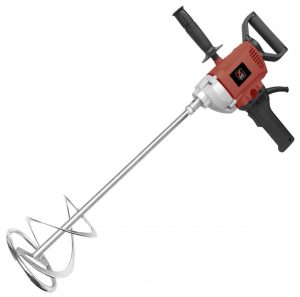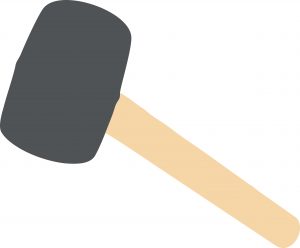
Stirrer Machine :
In order to mix tile adhesive mechanically you need a good stirrer machine with torque control and a mixing paddle attachment. On the other hand, for small projects you can mix tile adhesive by using a margin trowel, but you should remember it will take a longer time. That is why, for surfaces larger than 30 Sq. Ft. / 10 m2 it is better to buy or rent a drill machinery. It will get the job done quicker and much better. Especially if you install wall tile on old surfaces, the quality of the thin set adhesive is essential.

Notch Trowel :
Notch trowel is a rectangular shaped tool with regularly spaced notches along one or more sides used to apply adhesive when adhering tile or stone or laying synthetic floor surfaces.

Twin Blade Grout Remover :
Tungsten Carbide grit edged blade for longer life. For removing old and discolored grout. Heavy duty nylon handle designed for extra grip.

Rubber Float :
Grouting is an important part of any tile installation. Grout fills the spaces between tiles, called grout joints, to create a continuous surface. The only way to apply grout properly is by using a rubber grout float, which consists of a rectangular rubber pad that is firm but flexible and a C-shaped handle. The process of grouting with a float includes filling the joints with freshly mixed grout and scraping the tiles clean of excess grout.

Rubber Hammer :
While leveling the tiles during laying process, it is not advisable to tap the tiles with a normal hammer & with the handle of the hammer. Rubber Hammer is suitable for the said use without causing any damage to the tiles like breakage.

Tile Leveling System:
It’s almost certain that you will need a good tile leveling system to prevent tile lippage, especially when dealing with large format tiles. Due to its design, a tile leveling system interlocks the tiles, ensuring that the surface remains smooth and flat while the thin set dries.
The interlocking design not only that minimizes the possibility of lippage, but it can also reduce or even eliminate settling from shrinkage. In addition to preventing lippage, a tile leveling system can also reduce the time of installation by almost eliminating the need to lift some of the tiles to add more thin set. A complete system consists of three main components: strips, caps, and pliers. These elements work together to prevent the movement of tiles when the compound is setting in and to improve the flatness of the surface. The tile strips guarantee rapid leveling. Due to their reduced thickness, the strips can reduce warpage to 1/16 inch (1.5mm), the allowable lippage for grout joints. The circular base of the tile caps ensures that the pressure is distributed evenly over the surface of the tile. Because the pressure is applied vertically, you don’t have to check the variations in height between the tiles constantly. The role of the tile pliers is to provide the necessary pressure to the tile caps, thus making it easier for you to obtain a perfect leveling of the surface. The pliers can be used both horizontally (on the floor) and vertically (on the wall.) If you don’t own a tile leveling system and you’re just now considering buying one, make sure that the pliers have an ergonomic design. Not only that the bi-material handles are lightweight and safe, but they’re also sturdy enough to withstand years of constant use.
Tile Spacers :

Professionals worldwide use the HDPE tile spacers, because they want the best finish for all of their tile installation work.
